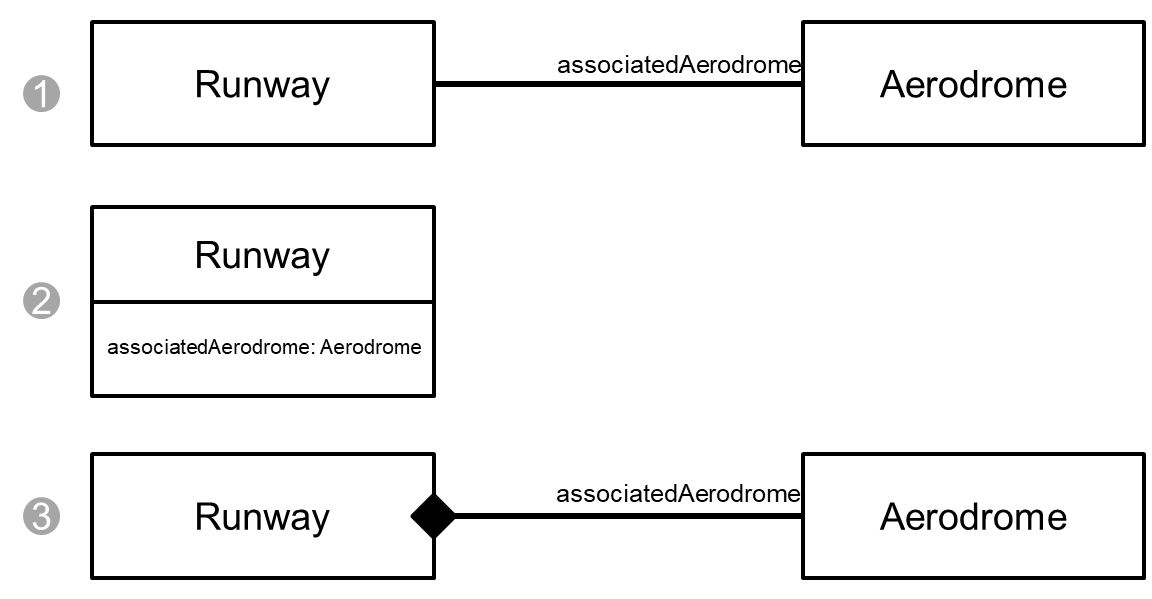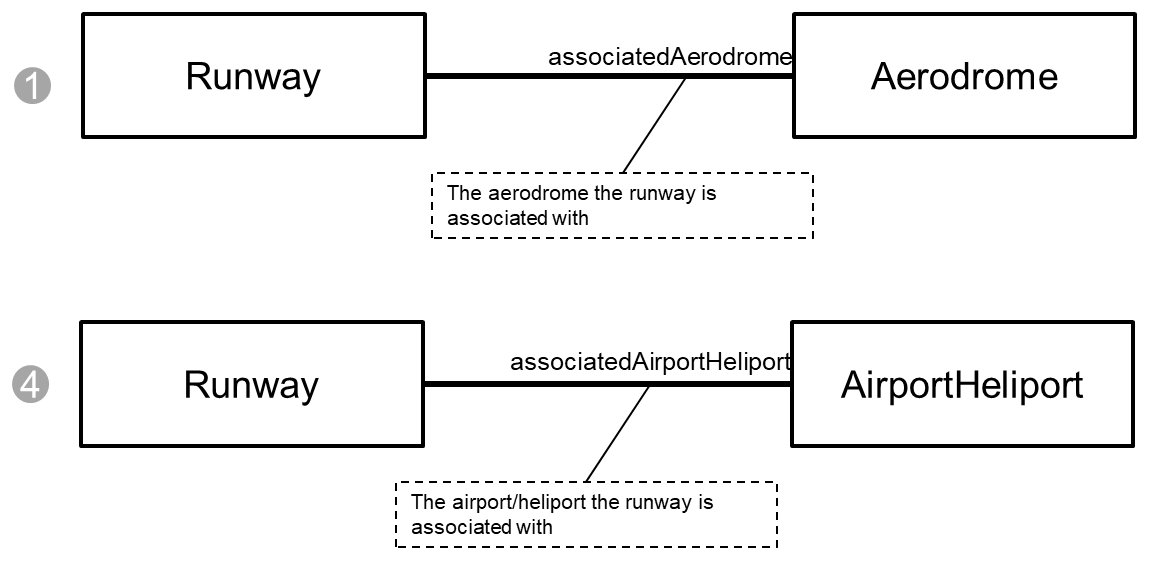SWIM-INFO-009 Preservation of meaning
Last updated: AUGUST 26th, 2019
Requirement
Guidance
This requirement promotes the overall consistency of terms and definitions used in the ATM network. This will make the achievement of semantic interoperability easier.
The requirement focuses on "meaning". Therefore, an information definition's concepts do not need to follow the same structure as in the AIRM . The figure below illustrates some example of different strutures:
- the information definition can use a class-attribute structure (2) where the AIRM has a class only structure (1).
- the information definition can make use of generalisation and composition (3) in contrast to the AIRM's flatter structure (1).

Definitions and names used in the information definition need not be exactly the same as those in the AIRM, some flexibility is allowed. For example:
- the definition in the information definition can be rewritten e.g. the AirportHeliport example in the specification itself and illustrated below where (4) shows the information definition is rewritten with regards to the AIRM (1).
- the definition in the information definition can made more specific/restrictive with respect to the semantics of the AIRM e.g. by introducing business rules.

The main issue to be resolved here is what to do when the requirement is not met. For example, what should be done when an information definition uses the term "Flight" which has the same definition as the AIRM's definition of "FlightLeg" as opposed to "Flight".
Best Practice
When this requirement is not met, the difference should be noted in the verification report. The semantic correspondence should still be established to make the correct interpretation of the concept clear.
Verification Support
Consistency
Check that:
[ ] The information definition uses definitions that are consistent with the AIRM when the concept's name is the same as that in the AIRM.